This article was medically reviewed by Theodore Leng, MD. Dr. Leng is a board certified Ophthalmologist and Vitreoretinal Surgeon and an Assistant Professor of Ophthalmology at Stanford University. He completed his MD and Vitreoretinal Surgical Fellowship at Stanford University in 2010. Dr. Leng is a Fellow of the American Academy of Ophthalmology and the American College of Surgeons. He is also a member of the Association for Research in Vision and Ophthalmology, the Retina Society, the Macula Society, the Vit-Buckle Society, as well as the American Society of Retina Specialists. He received the Honor Award by the American Society of Retina Specialists in 2019.
There are 8 references cited in this article, which can be found at the bottom of the page.
This article has been viewed 142,690 times.
Experts agree that lazy eye (amblyopia) is the most common cause of impaired vision in children. Lazy eye occurs when one eye is weaker than the other, which may cause the weaker eye to wander inward or outward.[1] Research shows that treatment for lazy eye is most effective if you start it early, so visit the eye doctor for regular check-ups or if you notice signs of lazy eye. Early signs of lazy eye might include squinting, shutting 1 eye, or tilting your head to see better.[2] With treatment, you may be able to correct lazy eye, so try not to worry.
Steps
Treating Minor Cases of Lazy Eye
-
1Understand what "lazy eye" is. Lazy eye is a term used to describe the medical condition called "amblyopia." Amblyopia is a condition that develops most often in children sometime before the age of seven. It starts with one eye being stronger than the other, and an automatic response in the child to use the stronger eye more than the weaker one (as the child gradually begins to favor the strong eye more and more). This leads to reduced vision in the weaker eye due to incomplete development of the visual pathway, which worsens over time (the longer the condition goes untreated).[3]
- It is for this reason that diagnosing and treating amblyopia as soon as possible is key. The sooner it is recognized and dealt with, the better the outcome and the quicker the fix.[4]
- There are usually no long-term consequences from amblyopia, especially when it is caught early and is a minor case (which the vast majority are).[5]
- Note that, over time, as the "good eye" continues to get stronger in relationship to the "bad eye," the "bad eye" will begin to be misaligned. What this means is that when you look at your child, or when the doctor examines her, one eye (the "bad" one) may appear to be wandering off to one side, not focused on the object at hand, or somehow "not perfectly straight."
- This misalignment is quite common with amblyopia and usually resolves with prompt recognition and treatment.
-
2See the doctor. Since amblyopia is a condition diagnosed most commonly in children, if you suspect your child may have the condition it is best to see a physician as soon as possible. For the best chance of catching a case of lazy eye early, ensure that your child receives regular eye exams while she is young — some doctors recommend exams at six months, three years, and then every two years after that.[6]
- Although the prognosis is typically best for young lazy eye sufferers, recent experimental procedures have shown promise for adult sufferers.[7] Talk to your doctor or ophthalmologist to learn the latest treatment options available to you.
Advertisement -
3Wear an eye patch. For certain cases of lazy eye involving impaired vision in one eye and normal vision in the other eye, patching or covering the "good" eye may be required. Forcing the lazy eye sufferer to use his "bad" eye to see gradually strengthens the vision in that eye. Patches are most effective in patients younger than the age of seven or eight.[8] The patch is typically worn between three to six hours per day for a period of time ranging from a few weeks to as long as a year.
- A doctor may recommend that, while wearing a patch, the lazy eye sufferer concentrate on performing activities like reading, schoolwork, and other activities that force her to focus on up-close objects.
- Patches may be used in conjunction with corrective eyewear.
-
4Use a prescribed eye medication. Medication— usually in the form of atropine eye drops —may be used to blur the vision of the good eye in order to force the weaker one to work. This treatment works according to the same principle as a patch treatment works by — forcing the "bad" eye to see gradually strengthens its vision.
- Eye medication can be a good choice for children who are reluctant to wear an eye patch (and vice versa). However, eye drops may not be effective when the "good" eye is nearsighted.[9]
- Atropine eye drops are sometimes associated with minor side effects, including:[10]
- Eye irritation
- Reddening of surrounding skin
- Headaches
-
5Treat the condition with corrective eyewear. Special glasses are commonly prescribed to improve the focus of of the eyes and correct misalignment. For certain cases of lazy eye, especially when nearsightedness, farsightedness, and/or astigmatism contribute to the condition, glasses can fix the problem entirely.[11] In other cases, glasses may be used in conjunction with other treatments to fix lazy eye. Talk to your doctor or optometrist if you are interested in obtaining glasses for your lazy eye.
- In children of a sufficient age, contact lenses may sometimes be used instead of glasses.
- Note that, initially, people with lazy eye may find it more difficult to see when wearing their glasses. This is because they have become accustomed to their impaired vision and need time to gradually adjust to "normal" vision.
Treating More Serious Cases of Lazy Eye
-
1Undergo a surgical procedure. Surgery may be performed on the eye muscles to straighten the eyes if non-surgical means are unsuccessful. Surgery can also help in the treatment of amblyopia if the condition is caused by a cataract.[12] Surgery may be accompanied with the use of an eye patch, eye medication, or glasses, or, if it produces good results, may be sufficient on its own.
-
2Do eye exercises as recommended by your doctor. Eye exercises may be recommended either before or after surgery to correct faulty visual habits and to teach normal, comfortable use of the eyes.
- Because amblyopia often comes hand-in-hand with weakened eye muscles on the "bad side," it can take strengthening exercises to get your eye muscles even on both sides again.
-
3Follow-up with your doctor for regular eye exams.[13] Even after amblyopia has been surgically corrected (or otherwise corrected), it is possible that it may return in the future. Ensuring that you follow-up with your doctor according to the schedule of eye exams that they recommend will help you to avoid this problem.
Warnings
- If not detected and treated early in life, amblyopia can cause a permanent loss of vision with associated loss of stereopsis (two-eyed depth perception).⧼thumbs_response⧽
References
- ↑ https://www.mayoclinic.org/diseases-conditions/lazy-eye/symptoms-causes/syc-20352391
- ↑ https://www.nei.nih.gov/learn-about-eye-health/eye-conditions-and-diseases/amblyopia-lazy-eye
- ↑ http://www.webmd.com/eye-health/tc/amblyopia-topic-overview
- ↑ http://www.webmd.com/eye-health/tc/amblyopia-topic-overview
- ↑ http://www.webmd.com/eye-health/tc/amblyopia-topic-overview
- ↑ http://www.webmd.com/eye-health/amblyopia-child-eyes
- ↑ http://www.sciencedaily.com/releases/2013/04/130422122953.htm
- ↑ http://www.nhs.uk/Conditions/Lazy-eye/Pages/Treatment.aspx
- ↑ http://www.mayoclinic.org/diseases-conditions/lazy-eye/diagnosis-treatment/treatment/txc-20201907
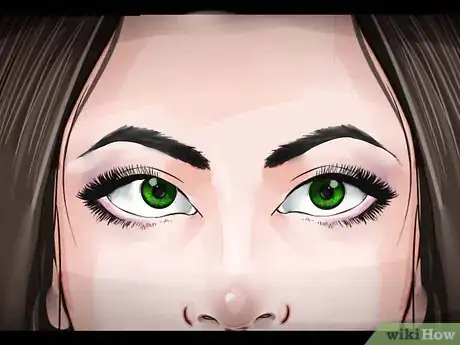
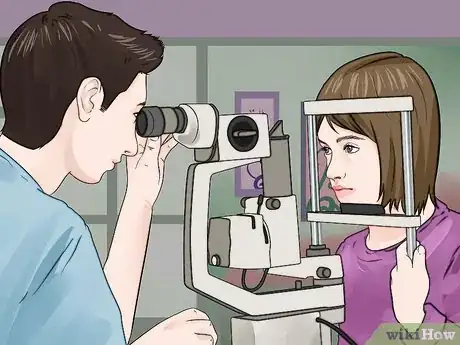
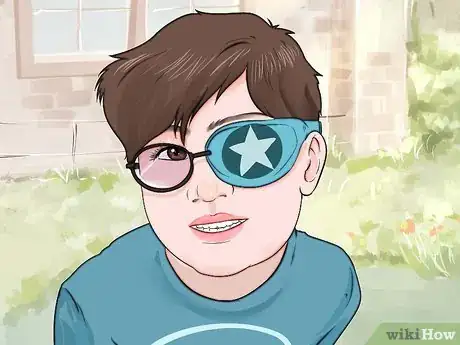
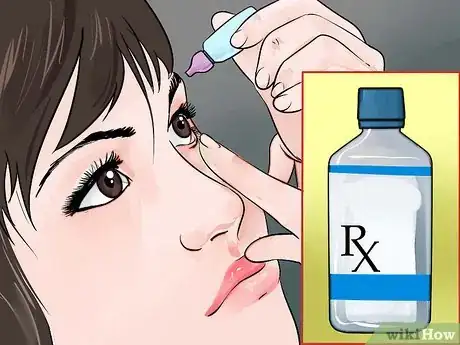
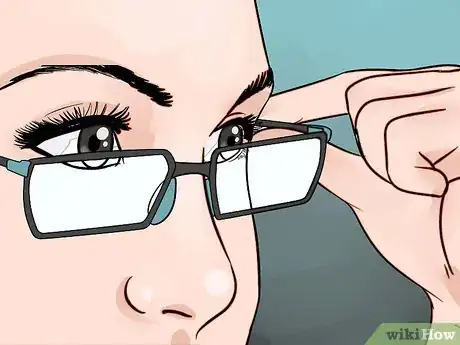
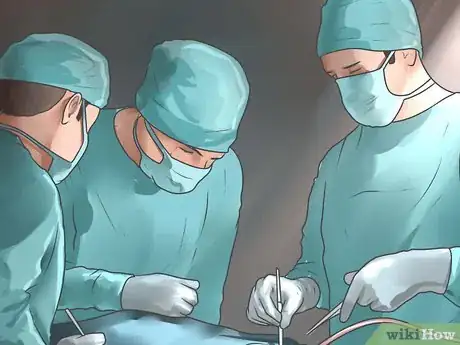
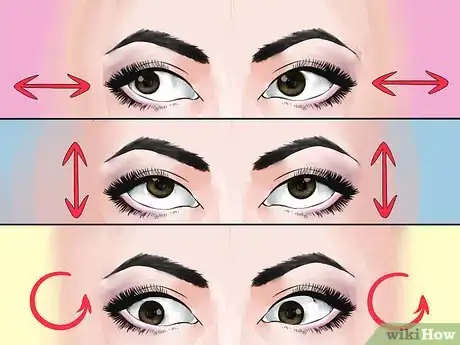
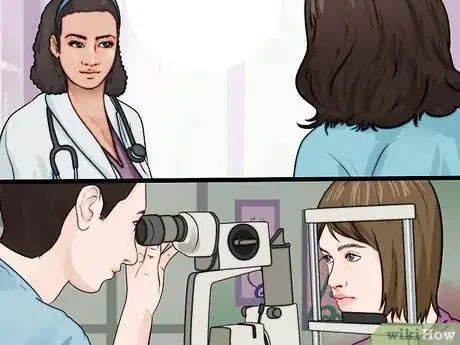





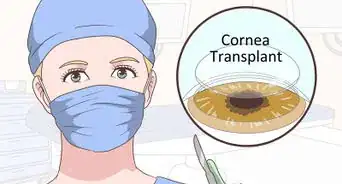
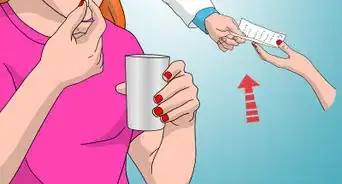
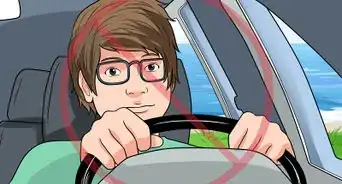






















































Medical Disclaimer
The content of this article is not intended to be a substitute for professional medical advice, examination, diagnosis, or treatment. You should always contact your doctor or other qualified healthcare professional before starting, changing, or stopping any kind of health treatment.
Read More...